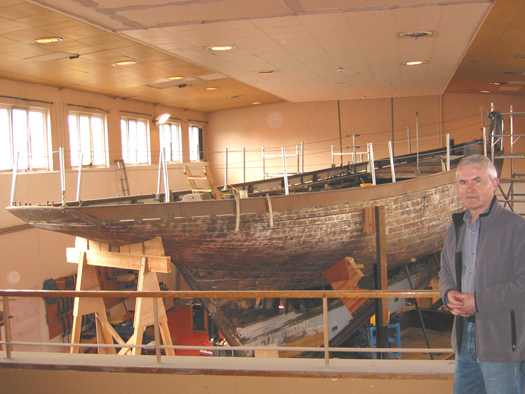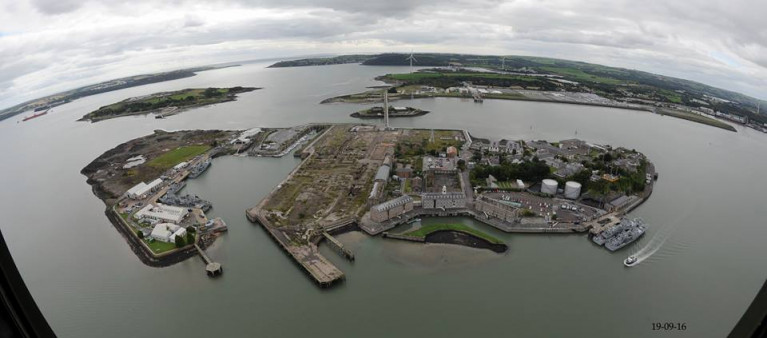Volvo Dun Laoghaire Regatta
From the Baily lighthouse to Dalkey island, the bay accommodates six separate courses for 21 different classes racing every two years for the Dun Laoghaire Regatta.
In assembling its record-breaking armada, Volvo Dun Laoghaire regatta (VDLR) became, at its second staging, not only the country's biggest sailing event, with 3,500 sailors competing, but also one of Ireland's largest participant sporting events.
One of the reasons for this, ironically, is that competitors across Europe have become jaded by well-worn venue claims attempting to replicate Cowes and Cork Week.'Never mind the quality, feel the width' has been a criticism of modern-day regattas where organisers mistakenly focus on being the biggest to be the best. Dun Laoghaire, with its local fleet of 300 boats, never set out to be the biggest. Its priority focussed instead on quality racing even after it got off to a spectacularly wrong start when the event was becalmed for four days at its first attempt.
The idea to rekindle a combined Dublin bay event resurfaced after an absence of almost 40 years, mostly because of the persistence of a passionate race officer Brian Craig who believed that Dun Laoghaire could become the Cowes of the Irish Sea if the town and the local clubs worked together. Although fickle winds conspired against him in 2005, the support of all four Dun Laoghaire waterfront yacht clubs since then (made up of Dun Laoghaire Motor YC, National YC, Royal Irish YC and Royal St GYC), in association with the two racing clubs of Dublin Bay SC and Royal Alfred YC, gave him the momentum to carry on.
There is no doubt that sailors have also responded with their support from all four coasts. Running for four days, the regatta is (after the large mini-marathons) the single most significant participant sports event in the country, requiring the services of 280 volunteers on and off the water, as well as top international race officers and an international jury, to resolve racing disputes representing five countries. A flotilla of 25 boats regularly races from the Royal Dee near Liverpool to Dublin for the Lyver Trophy to coincide with the event. The race also doubles as a RORC qualifying race for the Fastnet.
Sailors from the Ribble, Mersey, the Menai Straits, Anglesey, Cardigan Bay and the Isle of Man have to travel three times the distance to the Solent as they do to Dublin Bay. This, claims Craig, is one of the major selling points of the Irish event and explains the range of entries from marinas as far away as Yorkshire's Whitby YC and the Isle of Wight.
No other regatta in the Irish Sea area can claim to have such a reach. Dublin Bay Weeks such as this petered out in the 1960s, and it has taken almost four decades for the waterfront clubs to come together to produce a spectacle on and off the water to rival Cowes."The fact that we are getting such numbers means it is inevitable that it is compared with Cowes," said Craig. However, there the comparison ends."We're doing our own thing here. Dun Laoghaire is unique, and we are making an extraordinary effort to welcome visitors from abroad," he added. The busiest shipping lane in the country – across the bay to Dublin port – closes temporarily to facilitate the regatta and the placing of six separate courses each day.
A fleet total of this size represents something of an unknown quantity on the bay as it is more than double the size of any other regatta ever held there.
Volvo Dun Laoghaire Regatta FAQs
Dun Laoghaire Regatta is Ireland's biggest sailing event. It is held every second Summer at Dun Laoghaire Harbour on Dublin Bay.
Dun Laoghaire Regatta is held every two years, typically in the first weekend of July.
As its name suggests, the event is based at Dun Laoghaire Harbour. Racing is held on Dublin Bay over as many as six different courses with a coastal route that extends out into the Irish Sea. Ashore, the festivities are held across the town but mostly in the four organising yacht clubs.
Dun Laoghaire Regatta is the largest sailing regatta in Ireland and on the Irish Sea and the second largest in the British Isles. It has a fleet of 500 competing boats and up to 3,000 sailors. Scotland's biggest regatta on the Clyde is less than half the size of the Dun Laoghaire event. After the Dublin city marathon, the regatta is one of the most significant single participant sporting events in the country in terms of Irish sporting events.
The modern Dublin Bay Regatta began in 2005, but it owes its roots to earlier combined Dublin Bay Regattas of the 1960s.
Up to 500 boats regularly compete.
Up to 70 different yacht clubs are represented.
The Channel Islands, Isle of Man, England, Scotland, Wales, Northern Ireland, Ireland countrywide, and Dublin clubs.
Nearly half the sailors, over 1,000, travel to participate from outside of Dun Laoghaire and from overseas to race and socialise in Dun Laoghaire.
21 different classes are competing at Dun Laoghaire Regatta. As well as four IRC Divisions from 50-footers down to 20-foot day boats and White Sails, there are also extensive one-design keelboat and dinghy fleets to include all the fleets that regularly race on the Bay such as Beneteau 31.7s, Ruffian 23s, Sigma 33s as well as Flying Fifteens, Laser SB20s plus some visiting fleets such as the RS Elites from Belfast Lough to name by one.
Some sailing household names are regular competitors at the biennial Dun Laoghaire event including Dun Laoghaire Olympic silver medalist, Annalise Murphy. International sailing stars are competing too such as Mike McIntyre, a British Olympic Gold medalist and a raft of World and European class champions.
There are different entry fees for different size boats. A 40-foot yacht will pay up to €550, but a 14-foot dinghy such as Laser will pay €95. Full entry fee details are contained in the Regatta Notice of Race document.
Spectators can see the boats racing on six courses from any vantage point on the southern shore of Dublin Bay. As well as from the Harbour walls itself, it is also possible to see the boats from Sandycove, Dalkey and Killiney, especially when the boats compete over inshore coastal courses or have in-harbour finishes.
Very favourably. It is often compared to Cowes, Britain's biggest regatta on the Isle of Wight that has 1,000 entries. However, sailors based in the north of England have to travel three times the distance to get to Cowes as they do to Dun Laoghaire.
Dun Laoghaire Regatta is unique because of its compact site offering four different yacht clubs within the harbour and the race tracks' proximity, just a five-minute sail from shore. International sailors also speak of its international travel connections and being so close to Dublin city. The regatta also prides itself on balancing excellent competition with good fun ashore.
The Organising Authority (OA) of Volvo Dun Laoghaire Regatta is Dublin Bay Regattas Ltd, a not-for-profit company, beneficially owned by Dun Laoghaire Motor Yacht Club (DMYC), National Yacht Club (NYC), Royal Irish Yacht Club (RIYC) and Royal St George Yacht Club (RSGYC).
The Irish Marine Federation launched a case study on the 2009 Volvo Dun Laoghaire Regatta's socio-economic significance. Over four days, the study (carried out by Irish Sea Marine Leisure Knowledge Network) found the event was worth nearly €3million to the local economy over the four days of the event. Typically the Royal Marine Hotel and Haddington Hotel and other local providers are fully booked for the event.
©Afloat 2020































































